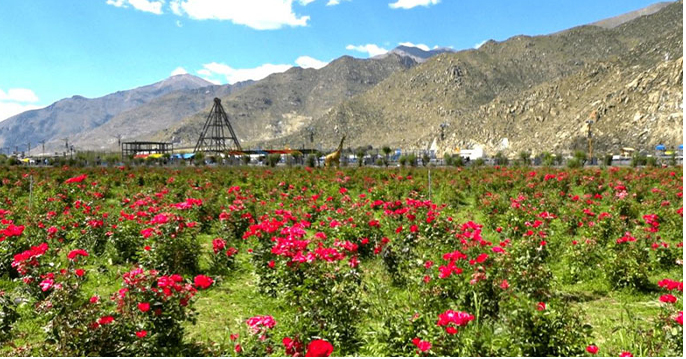- Albanian
- Arabic
- Belarusian
- Bengali
- Czech
- English
- French
- German
- Hebrew
- Hungarian
- Indonesian
- irish
- Italian
- Japanese
- kazakh
- Persian
- Russian
- Thai
- Uzbek
- Vietnamese
roller coaster blueprints
The Magic of Roller Coaster Blueprints A Journey into Design and Engineering
Roller coasters are not just thrilling rides; they are engineering marvels that combine creativity, physics, and innovation. Behind every unforgettable ride lies intricate blueprints that guide the construction process. These blueprints are essential documents that outline every aspect of the roller coaster, ensuring safety, functionality, and excitement.
The Importance of Blueprints
Blueprints serve as the backbone of roller coaster design. They provide detailed diagrams of the coaster's layout, including its elevations, curves, and loops. These visual representations are crucial for engineers and architects, as they translate abstract ideas into tangible structures. The complexity of a roller coaster's design requires a precise approach to ensure that gravity, speed, and centrifugal forces are skillfully balanced.
Every blueprint begins with conceptual sketches, which are then refined into detailed plans using computer-aided design (CAD) software. This allows designers to visualize the ride in a three-dimensional space, enabling them to assess aesthetics and functionality simultaneously. Aspects like rider experience, safety measures, and environmental adaptation are discussed and adjusted in this phase.
Key Components of Roller Coaster Blueprints
1. Layout Design This includes the overall track design, which consists of hills, turns, spirals, and loops. Engineers often utilize computer simulations to predict how the coaster will behave in real-life conditions, ensuring that thrilling elements do not compromise safety.
2. Elevation and Gradient The heights of drops and the angles of ascents play a significant role in the coaster's speed and thrill level. Blueprints must accurately detail these elevations to maintain safety standards while maximizing excitement.
3. Material Specifications Different materials, such as steel and wood, offer distinct advantages and challenges. Steel coasters tend to allow for sharper and more complex designs, while wooden coasters have a classic charm. The choice of materials influences the durability, maintenance, and overall ride experience.
roller coaster blueprints

4. Safety Measures Safety is paramount in roller coaster design. Blueprints incorporate various safety features, including restraint systems, emergency stop mechanisms, and structural reinforcements. Engineers conduct thorough analyses to ensure that each aspect can withstand the forces exerted during operation.
5. Rider Experience The emotional journey of riders is a crucial consideration. Blueprints take into account the pacing of the ride, the transitions between elements, and the visual and auditory experiences during the ride. Designers aim to create a continuous flow of excitement and anticipation.
Challenges in Designing Roller Coasters
Designing a successful roller coaster comes with its challenges. Building a ride that not only adheres to safety regulations but also delivers an exhilarating experience requires meticulous planning and execution. Engineers often face constraints related to space, budget, and regulatory oversight, which can complicate the design process.
Moreover, factors such as environmental impact and community support play vital roles in the approval and development of roller coasters. Engaging with different stakeholders, including local governments and the community, is essential to ensure that the project moves forward smoothly.
The Future of Roller Coaster Design
As technology continues to advance, the future of roller coaster design is promising. Virtual reality tools and enhanced simulation software are making it easier for designers to create innovative and complex ride experiences. Concepts such as magnetic propulsion systems and eco-friendly materials are being explored to push the boundaries of traditional roller coaster design.
In conclusion, roller coaster blueprints are a testament to the fusion of art and engineering. They represent the conception of thrill, excitement, and innovation, all while prioritizing safety. As designers continue to push the envelope, we can expect an exciting future filled with new heights—both literally and figuratively—for roller coasters around the world. Whether it's the adrenaline rush of the drop or the sheer joy of the experience, the journey begins with meticulously crafted blueprints that bring imagination to life.
-
Flume Ride-Hebei Zhipao Amusement Equipment Manufacturing Co., Ltd.|Thrilling Water Attraction&Customizable DesignJul.30,2025
-
Flume Ride - Hebei Zhipao Amusement Equipment | Water Coaster, Thrilling DescentJul.30,2025
-
Flume Ride - Hebei Zhipao | Thrilling Water AttractionJul.30,2025
-
Flume Ride: Thrilling Water Attraction by Hebei Zhipao|Log Flume Manufacturers&Flume Ride DesignJul.30,2025
-
Flume Ride-Hebei Zhipao Amusement Equipment Manufacturing Co., Ltd.|Thrilling Water Coaster, Safe DesignJul.30,2025
-
Flume Ride-Hebei Zhipao Amusement Equipment Manufacturing Co., Ltd.|Thrilling Water Attraction, Safe DesignJul.30,2025
